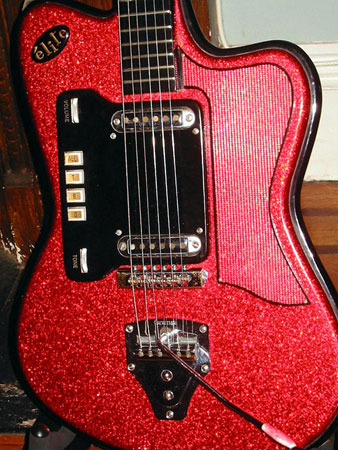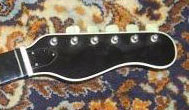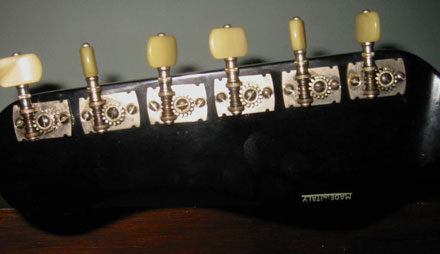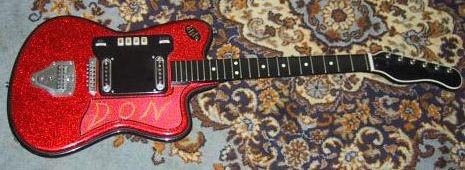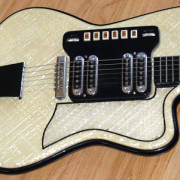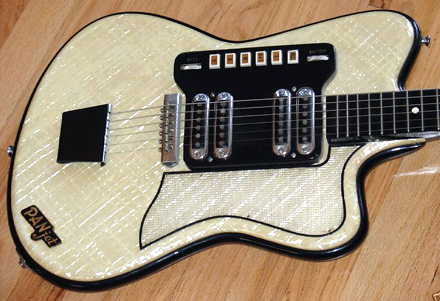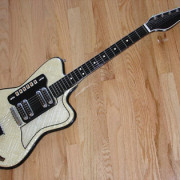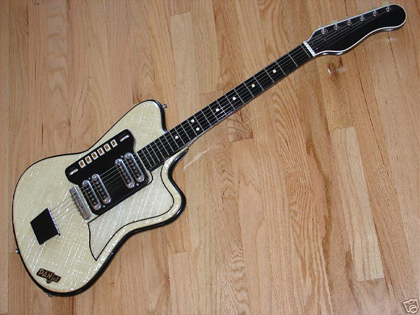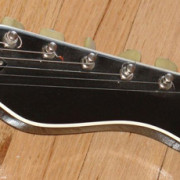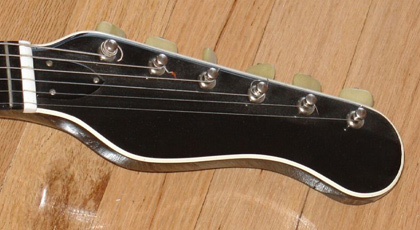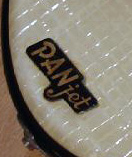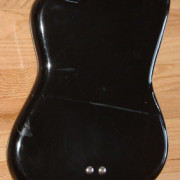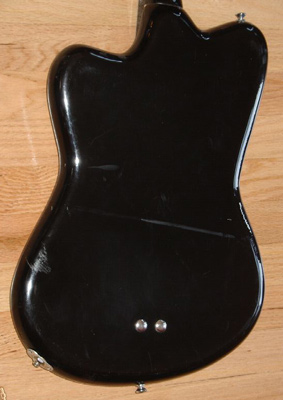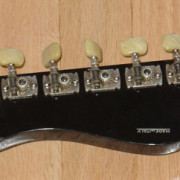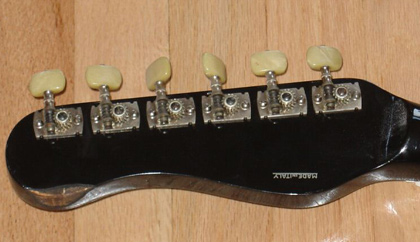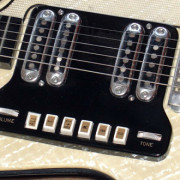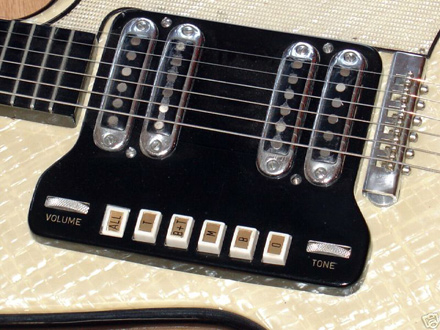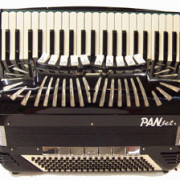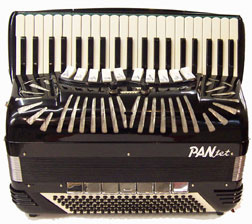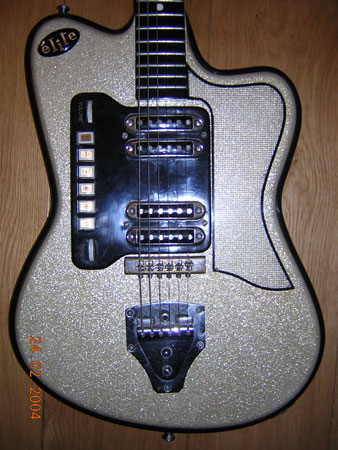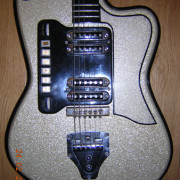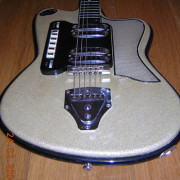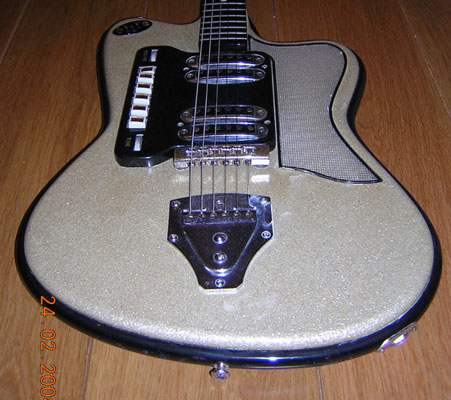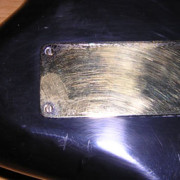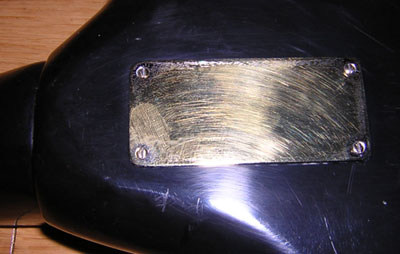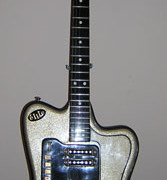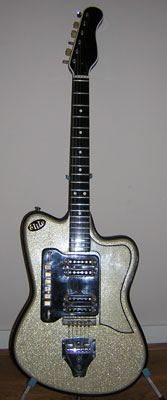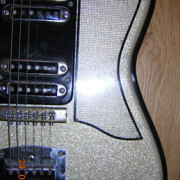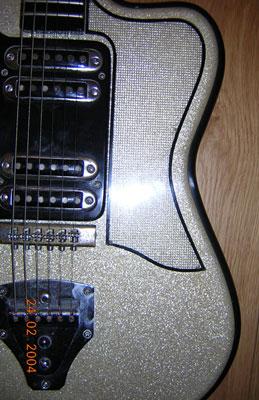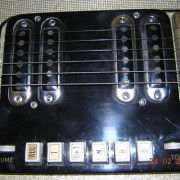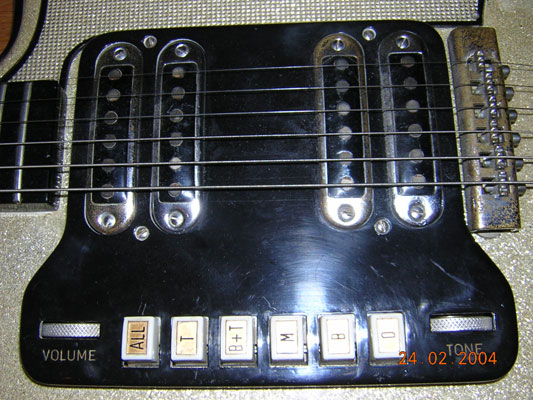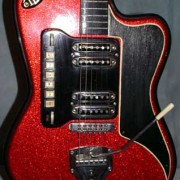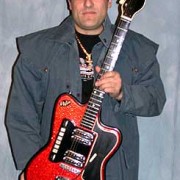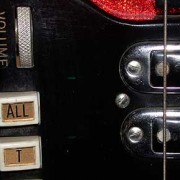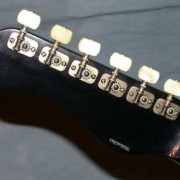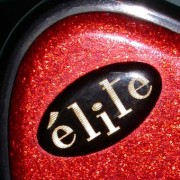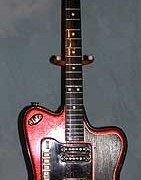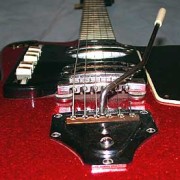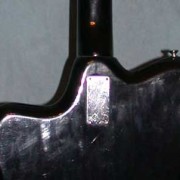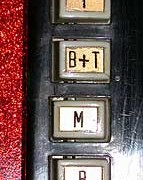- Glued-in neck
- plastic fretboard
- zero-fret
- all rounded-off headstock
- protruding volute à la Eko behind the nut
- open gear tuners with perloid buttons.
- Single-coil pickups, push-button selectorseparate pickguard.
- Extremely rare.
Crucianelli solid bodies: early 1962
by Jack Marchal
A Crucianelli Elite from the very first production run, in great condition. All original, including the tuning machines with their highly distinctive buttons. Their fitting plates have however an unusual profile. Some prototype version? Hey, the oldest guitar in this gallery is maybe this one!?
How many of those early Crucianelli solids with black single coil pickups were made? Certainly less than 300, perhaps not more than a few dozens. I used to believe they all were located in Europe, until this one surfaced in the USA.
Sessionman guitarist Patrick Matera of Brooklyn, NY, came casually upon this Elite 20-V and bought it, for coolness’ sake. Actually he intended at first to upgrade it with new hardware but changed his mind made after a look at our site: “I had no idea how rare this guitar was… So I haven’t changed any of the parts. Just learned to live with it.”
“It’s got a great, very unique sound and I’ve actually used it on a few recording sessions already. I only wish it had four pickups but that’s being picky.” Patrick recently played it on Laura Cantrell’s upcoming album [www.lauracantrell.com ].
An Austin, TX to NYC transplant, singer/songwriter/guitarist Patrick Matera is the leader of the band Paper Airplane [ www.paperairplanemusic.com ] and has been involved a lot of musical experiments. While in Texas he established himself as an in-demand sideman and played with artists such as Kim Richey, Kacy Crowley, Chet Atkins, Bonnie Raitt and many others.
Una Crucianelli Elite dalla primissima serie di fabbricazione, in magnifiche condizioni. Tutta originale, incluse le meccaniche con gli inconfondibili bottoni. Però le piastre di fissaggio di queste chiavette sono sagomate insolitamente. Qualche tipo prototipale? Potrebbe darsi che sia questa chitarra la più antica della presente galleria!?
Quante di queste Crucianelli Elite con pickups neri a singolo avvolgimento furono costruite? Sicuramente meno di 300, forse non più di alcune dozzine. Credevo che tutte fossero localizzate in Europa, finchè è emersa questa dagli USA.
Il chitarrista da studio Patrick Matera di Brooklyn, New York, ha trovato per caso questa 20-V e l’ha comprata, tanto era ‘cool’. Infatti intendeva prima migliorarla con hardware moderno ma cambiò idea dopo un’occhiata al nostro sito: “Non sospetttavo che fosse tanto rara… Allora non ho cambiato il minimo pezzo. Mi sono abituato a lei come è.”
“Ha un grande suono, proprio unico, e l’ho già usata per parecchie sessioni di incisione. Solo che l’avrei volonteri preferita con quattro pickups ma è come cercare il pelo nell’uovo.” Di recente Patrick l’ha suonata sull’album in preparazione di Laura Cantrell [ www.lauracantrell.com ].
Originario del Texas e stabilitosi a New York, il cantautore-chitarrista Patrick Matera, oltre al proprio complesso Paper Airplane [www.paperairplanemusic.com ], è stato coinvolto in numerose sperimentazioni musicali. In Texas si era promosso come raffinato musicista e ha suonato con Kim Richey, Kacy Crowley, Chet Atkins, Bonnie Raitt e tanti altri.

